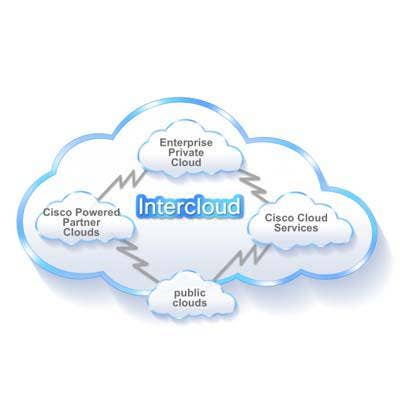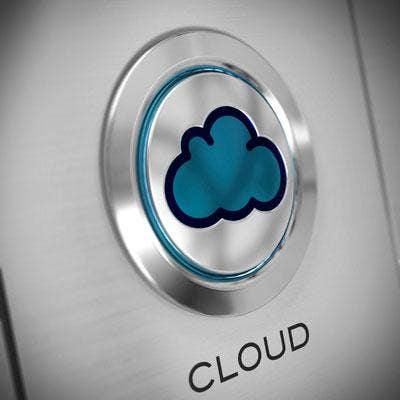CRN Exclusive: Cisco's Earle Defends Intercloud And Its Future In The Channel

Questions About Intercloud
If you're a Cisco Systems channel partner confused about where the networking giant's Intercloud strategy stands, you're not alone. Nick Earle, senior vice president of Global Cloud and Managed Services Sales, brings some clarity around the San Jose, Calif.-based company's plan for a global network of connected public and private clouds in an exclusive interview with CRN.
For more than two years, Earle has been on the front lines of Cisco's "cloud of clouds" strategy, which has recently come under fire as some channel partners say Intercloud isn't taking hold in the market. Earle says Intercloud is undergoing a transformation and expects its new leader, CTO Zorawar Biri Singh, to push forward Cisco's strategy.
In the interview, Earle details the specifics around Intercloud, the opportunities around applications, and new Intercloud solutions available to the channel.

So who exactly is in charge of Intercloud right now?
It's divided into two pieces. There's the engineering team for cloud and then there's the field team. There's been changes on both sides since we announced Intercloud two years ago. Edison Peres retired and Peder Ulander took over Edison's role. Peder runs the channel field organization. He's the go-to-market on the channel side and he reports to me.
On the engineering side, we just made a change. It was Yvette Kanouff, she took over six months ago, but that was just as Biri was coming on board. We did the handover from Yvette to Biri's team. Biri is now responsible for our next-generation data center and our cloud and our analytics. They're all very, very closely connected. He's responsible for all of that from an engineering point of view, and I'm responsible for the field go-to-market.

Why did Cisco decide to put Intercloud under the control of its new CTO?
One of the things that I've learned from working on Intercloud for now over two years is that it's really important that we have people who are cloud-native – people who really truly understand cloud and where the market is going. To me, Biri was brought in, he was at IBM and HP, but he also worked for a venture capital company where he was investing in cloud companies. So Biri, he absolutely is cloud-native.
Up until now Biri has been the CTO only, which means he sets the technology direction, and what we've just done with this reorganization is we've given him all the pieces to actually not only set the technology direction, but to implement a large part of it directly himself.

How will he be able to ramp up Intercloud while wearing so many different hats?
He still going to work with the [leadership] team and work with his colleagues across the board like Rowan [Trollope, pictured] in collaboration and David Goeckeler in security, but Biri now has a pretty big chunk of everything needed to implement the Intercloud vision directly under his personal control. I think it's a big leap forward for us. We've consolidated resources more into one place.
We needed that consolidation, that focus within engineering.

Is there anywhere in particular where Cisco is looking at consolidation for Intercloud?
Yes. In particular, getting the data center piece connected to the analytics piece, connected with the cloud software piece, is a great combination. The value will move northbound from the hardware into the application space and then up into the data fabric space and that's where increasingly the value will be for us, our partners and customers. By him having all of those components, we're lining up our organization directly [with our] strategy, which to me is the big change here.

Some channel partners say Intercloud is in a future state right now and customers aren't buying into the vision yet. Is Cisco looking at it as a solution looking toward the future compared to the present?
I understand why you got that feedback. … We still believe we've absolutely nailed the four principles [of Intercloud].
Will it become profitable for partners in 2016?
You have to separate the business model from what we're productizing. ... The other thing we've introduced is a managed OpenStack solution called Metapod -- a managed service for OpenStack and a cloud-native stack based on open-source components.

Has Cisco launched any new solutions for Intercloud recently?
We have three new cloud offerings. One is called Shipped, the other is Contiv, and then Mantl. Between them, what they allow is applications to be developed using micro-services and containers.
You can now actually not only develop on containers and microservices … but you can also for the first time programmatically call the network up from the application so you can set quality of service, security, etc. from inside the application using an API. Then on containers, you can set the rules which says which cloud you want those containers to move into using CliQr. So you can actually [move] the workloads across multiple clouds using multicloud management using CliQr. We are demonstrating not just VM portability between clouds, but we're now able to demonstrate application and policy portability between clouds with those offerings.

When will these solutions available to the channel?
They are available to our partners now. We demonstrated the new cloud tools [at Cisco Partner Summit 2016]. We demonstrated them during the breakouts at Partner Summit.

What's one example today of how a partner can use Intercloud to make a profit?
One example that people haven’t picked up on that I think will be one of the biggest opportunities for partners going forward is application modernization -- the ability to work with an end user and then, using tools like a Cloud Foundry, which we just recently put on our price list, you can take the legacy application that runs in a VMware environment and modernize [it so that it runs] on a cloud-native stack, for instance in containers. That is a multibillion-dollar [total addressable market] on the partner side.
We estimate about $20 billion of TAM for our partners here and 70 percent of that TAM is professional services. Professional services to migrate the legacy application into cloud-native and, of course, once you've got apps on legacy, Mode 1, and apps on cloud-native, Mode 2, you then manage them all with CliQr and ACI across the top of them. Partners see a huge opportunity to now move into the application migration space with our new PaaS.

Can you talk more about partner professional services around Intercloud?
We did a survey of all the 2,200 partners at Partner Summit and, on average, their professional services business grew 50 percent in the last year. So it is very clear that the professional services -- by the way, professional services is 75 percent of their profit -- is the more profitable part of their business.
So Intercloud with now the ability to have Mode 1 and Mode 2 stacks under a common user interface [provides] a huge new opportunity for partners to do professional services, to do application migration from legacy applications to cloud-native applications, and that is the No. 1 conversation I had with partners.

You said there's four principles of Intercloud. Are they all still on track?
First of all, Intercloud itself is not a cloud. It's not the Cisco cloud. Intercloud is a business model connecting clouds together. When we announced it, we said it was based on four principles. The first [principle] is that the world would move to hybrid cloud. We've seen that absolutely happen and we've got a lot of capabilities now with our Cisco ONE enterprise cloud suite, including Intercloud Fabric, which allows the portability of workloads.

What's the second principle?
The second principle is it would be based on policy extensibility. The acquisition of CliQr was a really important part of that because what CliQr does is it integrates with ACI and it also has been integrated into about 17 clouds that are out there including AWS, IBM SoftLayer, Google as well as Microsoft Azure.
So multicloud management and the orchestration piece to it, again linked to ACI, is the second pillar to Intercloud. Two years ago we didn’t have that. That was the reason we bought CliQr -- to enable that second pillar. When that acquisition closes we'll have the second pillar covered.

How about the third principle?
That it wouldn't be a vendor-centric model like AWS or Azure or Google, it would be a partner-centric model. One of the reasons we said that is it wasn't the fact that we're partner-centric, but that we anticipated an explosion in the requirement for local data sovereignty. This was all before Edward Snowden, but now we see this huge demand for local data, not only stored, but operated by companies who are governed under the local law.

And the final principle of Intercloud?
The fourth pillar was that we said it would be an enabler to the Internet of Things. That pillar we've done a little on, but I would expect that's the one we've done the least on. Jasper [Technologies] was a component of that, but in our analytics portfolio we'll build out significantly more than that.

Cisco has been talking heavily about containers lately. How many businesses are ready to go directly to containers?
There's been news about Goldman Sachs and The Wall Street Journal that they're moving all of their apps to containers. The web-based startups are going directly to containers, but right now I would say from an end- user point of view -- excluding the software companies and software startups – from an end-user point of view, containers is 1 [percent] to 2 percent of the application space today.
The question is, 'What's in the middle?' What's in the middle are people doing application modernization and, secondly, orchestration -- a single-pane-of-glass management – and multicloud management orchestration in the middle.

Are people ready to go to Intercloud?
I come back to the fact that Intercloud is a business model and it gets implemented on a journey, a journey from where they are. The first step is private cloud. The second step is to put a cloud-native stack in as opposed to a traditional cloud stack. The third step is to put multicloud management and orchestration across the top of those stacks -- traditional and cloud-native. The fourth step is to start moving your applications from traditional stacks to cloud-native stacks. The fifth step is to start experimenting with containers. We've mapped out this five-step process and we're in the process of rolling that out internally across Cisco and training our sales force and training our partner organization.

How big will containers be for Cisco in this five-step process?
Eventually the largest segment will be the containers on step five, but today it's step one: build a private cloud. … We work with [research firm] IDC and we surveyed about 20,000 customers. Frankly, still about 35 [percent] to 40 percent of customers haven't even put a private cloud in on top of a FlexPod.